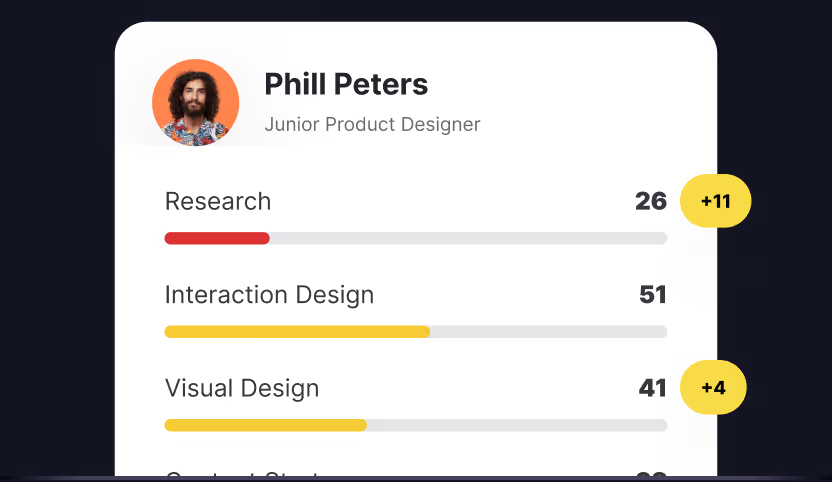
Companies that overlook the importance of design are ignoring one of the keys to success. Design-driven organizations outperform their competition by more than double. Just look at companies like Apple, Target, or Coca-Cola—all successful, design-driven companies. In fact, companies that are part of the DMI Design Centric Index outperform the S&P 500 by 228%.
The numbers don’t lie. If you want to set your company up for success, creating a strong design team is a good place to start. But how do you go about improving UX team?
Before you can figure out how to improve your design team’s skills, you first need to get a firm idea of where their strengths and growth opportunities currently lie. UX design schools, these achievements do not necessarily guarantee that they possess the necessary qualities of a competitive, empathetic designer with a focus on user needs. Assessing your team’s skills allows you to understand your current team’s makeup, highlights areas where they’re already strong, and indicate areas where there’s room for improvement.

Understand your team's skills
Creating a solid profile of where a team’s skills are strongest lets you make better decisions about hiring additional designers to create a more well-rounded team, as well as where you can foster learning for your current team members. Being able to assess UX skills of individual team members and track their improvements benefits your entire organization.
Imagine having data at your fingertips about how designers have actually improved their skillsets when making decisions about who to promote. Right now, it can be incredibly difficult to figure out who on the team is improving and whose skills are remaining stagnant.
It also clues designers into where they’re improving and still need to learn more. While it might seem obvious that designers would understand their own strengths and weaknesses, that’s not always the case without tools to measure their knowledge. As one Uxcel user said, “One of the biggest challenges we face when learning is in ourselves. What we think we know and what we need to know. Uxcel is always pushing us — the learning method is a constant challenge...By constantly reviewing complex subjects in a totally visual and practical way, you can take your vision of professional design to another level with Uxcel.”
Having an opportunity to evaluate the performance of your design team and identify areas for improvement makes studying easier and more efficient. Designers won’t spend time and effort on areas where they’re already knowledgeable, and can instead focus specifically on areas in most need of further learning.
As one designer said, “Uxcel is an amazing source of knowledge. It's really good to have learning paths, to see your progress, and to know that in just a few minutes you can learn so much in such a productive way.”
Plus, by gamifying the learning and assessment process, you can motivate teams through healthy competition. Team members will be motivated to improve alongside their teammates, as well as to raise the overall team’s scores. When used correctly, this kind of gamification makes the entire process more fun and rewarding for everyone on the team.
A stronger design team will result in better products, which when combined with other factors, will lead to a more successful company!

Implementing team assessments
One of the most impactful ways to assess teams is to create skills maps for each team member. While this process isn’t new, until Uxcel there were few objective ways to measure UX team skills. Instead, teams had to rely on their perceptions of each team member’s skills, which wouldn’t always give an accurate picture.
For example, if a team member hadn’t had an opportunity to do work in a certain area, they might be perceived as having weak skills in that area when the reality could be the opposite. By incorporating objective skill assessments into the skill mapping process, you get an accurate picture of where each team member’s skills are strongest.
To effectively create a skill map for your team, you’ll need to start by deciding which skills you want to assess. From there, each team member can take the appropriate Uxcel assessments to get an accurate, objective picture of how strong their skills and knowledge are in each area.
Once the assessments are complete, you can create a map of each team member’s skills and then overlay those maps to get a full picture of the team’s strongest knowledge areas as well as where there are gaps. From there, Uxcel helps you by providing suggestions and hands-on interactive courses on each design topic. With these tools, your team can work together to improve their skills and knowledge base.
Uxcel empowers you to upskill your design team. They can also help your entire organization become more design-aware by introducing UX/UI training though interactive design courses and assessments. Imagine everyone from your marketing department to your executive team having a thorough understanding of UX design and the impact that can have on the entire organization’s success. And think of how much more effective communication between your development team and design team could be if they’re all speaking the same language when it comes to design.
Design-driven organizations are setting themselves up for more success than those who place other values first. Fostering design awareness across your entire organization allows designers to better lead the charge in creating a successful brand through everything from better product designs to creating unique customer experiences. Uxcel gives you the tools to create that design awareness.




